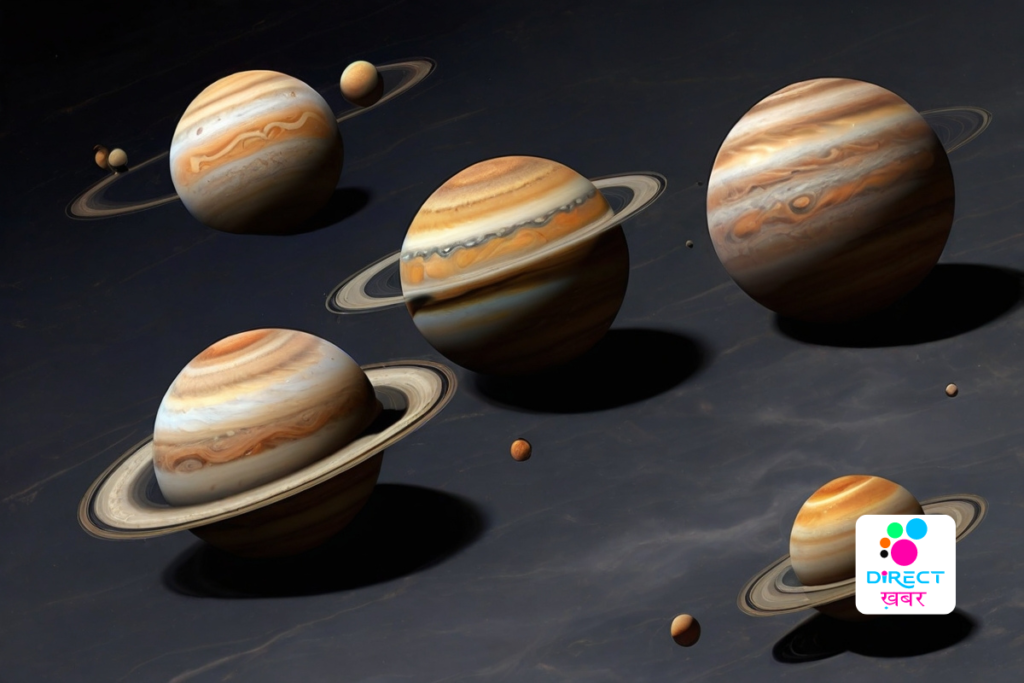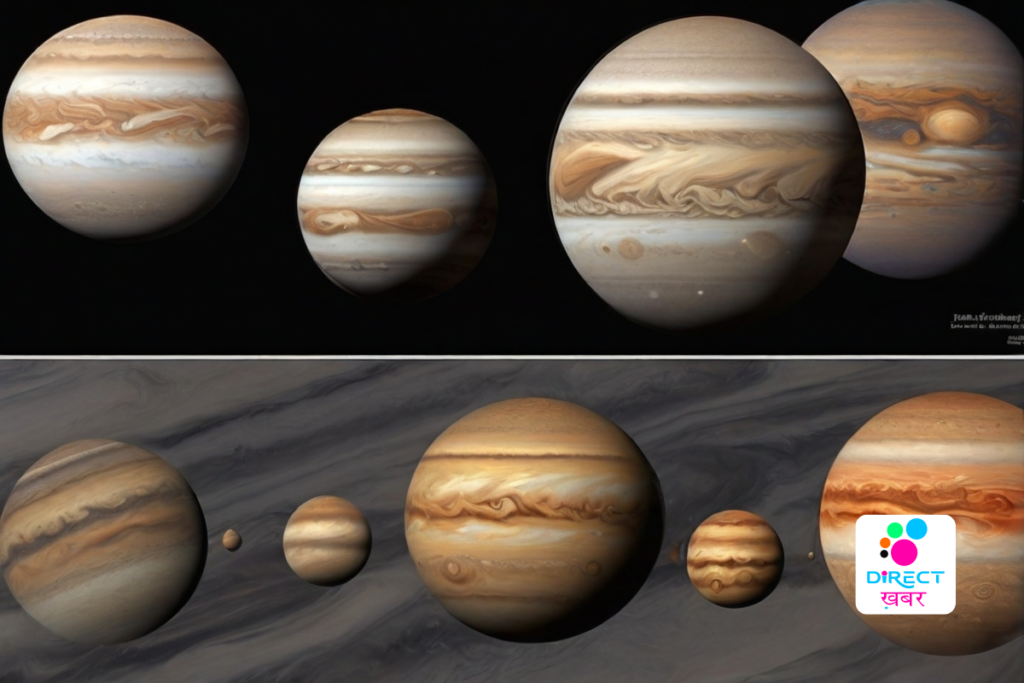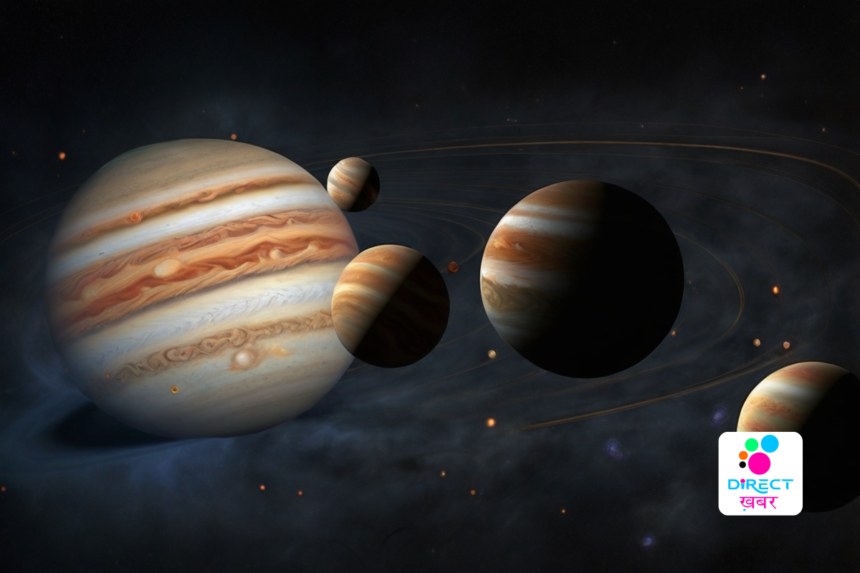NASA: Jupiter Experiences Frequent Multiple Solar Eclipses
In anticipation of one of the most eagerly awaited celestial events of the year, skygazers worldwide are gearing up for the total solar eclipse set to grace the skies tomorrow, on Monday. While such occurrences are rare on Earth, they are anything but uncommon on Jupiter, according to NASA. With more than ninety moons orbiting the gas giant, five of them—Amalthea, Io, Europa, Ganymede, and Callisto—are large enough or positioned close enough to completely block the Sun, leading to the frequent phenomenon of double, triple, and even multiple simultaneous eclipses on the planet.

Sharing the marvels of these cosmic events, NASA took to its social media platforms to showcase breathtaking images of solar eclipses on Jupiter. Captured by the Juno spacecraft, these images offer a glimpse into the awe-inspiring spectacle of Jupiter’s surface during a total solar eclipse caused by one of its moons, Ganymede.
In these images, Jupiter’s clouds paint a mesmerizing canvas of colorful patterns, including vibrant stripes, bands, and swirling formations in shades of blue and brown during the solar eclipse. Taken from a vantage point approximately 44,000 miles (71,000 km) above Jupiter’s cloud tops, the Juno spacecraft was positioned 15 times closer to the planet than Ganymede at the time of capturing the photographs.

“On the left side of the image, Jupiter’s surface is darkened by the shadow of one of its moons, Ganymede,” explained NASA in its accompanying post, providing a captivating glimpse into the eclipse’s visual impact on the gas giant.
While the total solar eclipse of 2024 won’t be visible from India, enthusiasts across the United States, Canada, Mexico, and other parts of North America are in for a treat. “On April 8, 2024, a total solar eclipse will cross North America, passing over Mexico, the United States, and Canada,” NASA stated on its website, ensuring that observers in these regions have the opportunity to witness this spectacular event firsthand.

As humanity continues to explore the wonders of our solar system and beyond, each celestial event serves as a reminder of the vastness and complexity of the universe we inhabit. Through the lens of science and technology, organizations like NASA offer us a glimpse into the breathtaking beauty and natural phenomena that unfold beyond the confines of our home planet.






